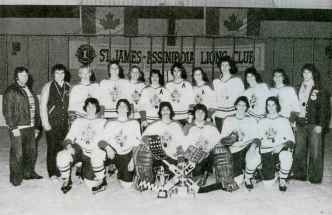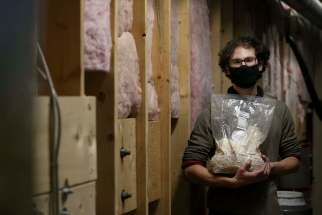Verdict a reminder of unfinished work
Read this article for free:
or
Already have an account? Log in here »
To continue reading, please subscribe:
Monthly Digital Subscription
$0 for the first 4 weeks*
- Enjoy unlimited reading on winnipegfreepress.com
- Read the E-Edition, our digital replica newspaper
- Access News Break, our award-winning app
- Play interactive puzzles
*No charge for 4 weeks then price increases to the regular rate of $19.00 plus GST every four weeks. Offer available to new and qualified returning subscribers only. Cancel any time.
Monthly Digital Subscription
$4.75/week*
- Enjoy unlimited reading on winnipegfreepress.com
- Read the E-Edition, our digital replica newspaper
- Access News Break, our award-winning app
- Play interactive puzzles
*Billed as $19 plus GST every four weeks. Cancel any time.
To continue reading, please subscribe:
Add Free Press access to your Brandon Sun subscription for only an additional
$1 for the first 4 weeks*
*Your next subscription payment will increase by $1.00 and you will be charged $16.99 plus GST for four weeks. After four weeks, your payment will increase to $23.99 plus GST every four weeks.
Read unlimited articles for free today:
or
Already have an account? Log in here »
Hey there, time traveller!
This article was published 17/12/2020 (1822 days ago), so information in it may no longer be current.
This week marked the fifth anniversary of the Truth and Reconciliation Commission of Canada’s final report. As such, it has been a week for reflection, a week for renewed committment to the calls to action outlined in the report, a week to acknowledge the work done and the work left to do.
And it was against this backdrop last Monday that, in a Thunder Bay courthouse, a white man was convicted for his role in the death of an Indigenous woman.
Brayden Bushby, 22, was found guilty of manslaughter for hurling a trailer hitch at Barbara Kentner, who died six months later as a result of injuries caused by the assault.

Ms. Kentner was a 34-year-old mother from Wabigoon Lake Ojibway Nation. She was walking with her sister, Melissa, on a residential Thunder Bay street in the early morning hours of Jan. 29, 2017, when Mr. Bushby threw the heavy, metal hitch at Ms. Kentner from a moving vehicle, striking her in the abdomen.
Mr. Bushby was heard laughing, and both sisters heard him say he “got one.” Ms. Kentner underwent emergency surgery to repair a perforated bowel and required palliative care until the end of her life in July 2017. She had an underlying liver condition, but complications related to her injuries from the blunt-force trauma were cited as the cause of her death.
Mr. Bushby has been released on bail. A sentencing hearing will take place in February.
“It’s a good outcome,” Ms. Kentner’s sister Connie said. “It’s what we wanted you know, in general. Would have been better if it was murder, first-degree, or something, second-degree.”
In fact, Mr. Bushby was initially charged with second-degree murder. The charge was then reduced to manslaughter, a move that outraged many in Ms. Kentner’s community and beyond. Many view the killing as emblematic of the systemic racism and violence toward Indigenous people that has plagued Thunder Bay for years. About 75 people attended rally last Monday to call attention to the racism in their city.
For too long, justice has eluded Indigenous women and girls, many of whom remain missing, their cases unsolved, their killers free. And even when justice is served, it’s often too little, too late. It’s understandable that many people may feel the manslaughter charge — even with a guilty verdict — is a compromise, something that resembles, but falls short of, justice.
.jpg?w=1000)
But justice doesn’t have to begin and end in a courtroom. It could, as Tuscarora author Alicia Elliott pointed out, extend to financial, emotional or physical support for Ms. Kentner’s surviving family. It could include connecting the dots between her killing and all the killings that have come before it, and the colonial systems, institutions and attitudes that allow racism, violence and objectification of Indigenous women to continue.
Anishinaabe journalist Tanya Talaga, writing in the Globe and Mail, offered this observation: “There are trials that arise from North America’s deep colonial history – trials of race where justice never seems to ever come, because the system itself is born from systems steeped in the policies of extermination and assimilation.”
Several of the calls to action outlined in the TRC report relate to justice and equity for Indigenous people in the legal system. A broader definition of what justice looks like — who gets it, who decides it, and how — is one path forward, but that’s accessible only if Canada renews its seemingly stalled commitment to meeting the urgent priorities identified in that crucial document a half-decade ago.







